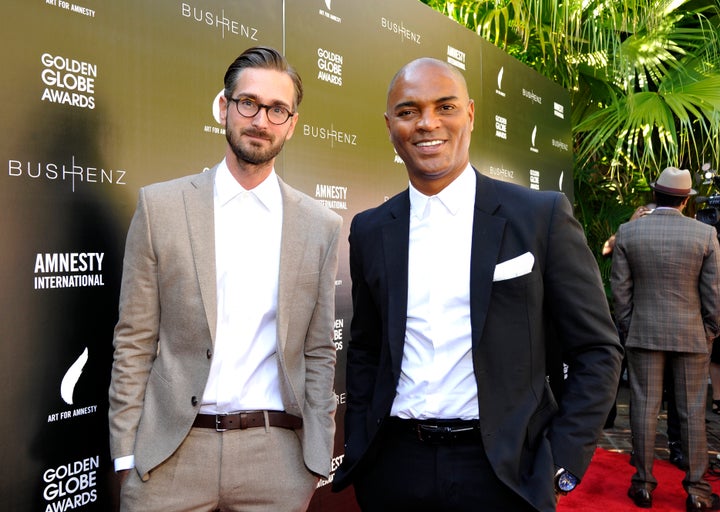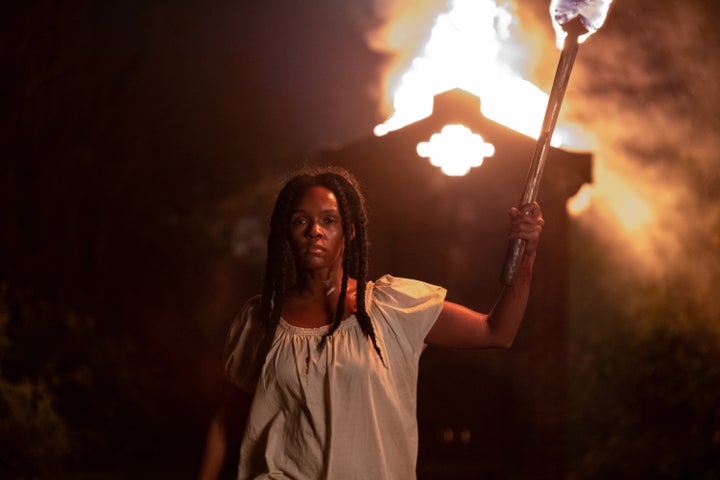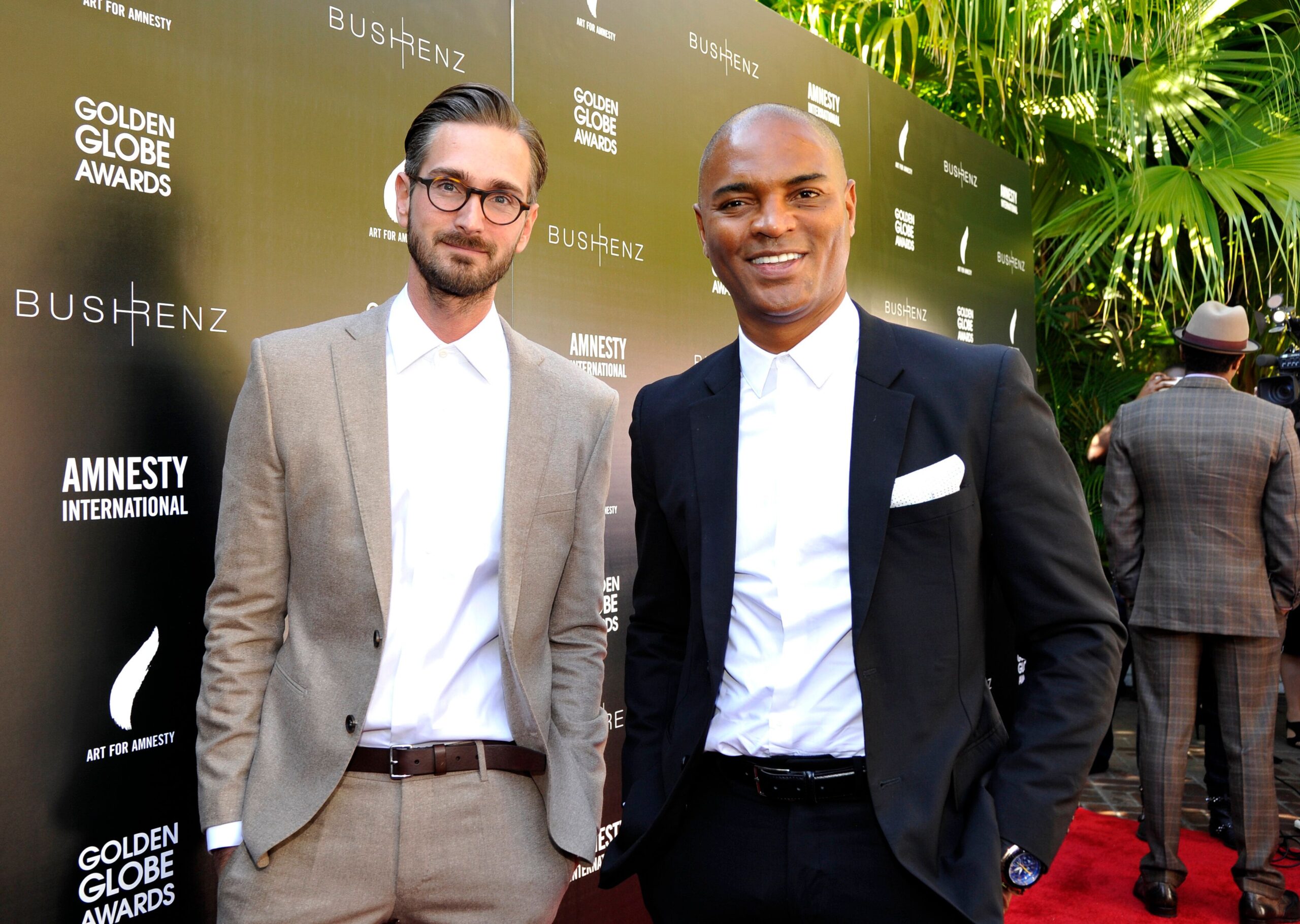How ‘Antebellum’ Turned America’s Relentless Racism Into A Brutal Horror Movie
Warning: Spoilers ahead.
If “Antebellum” plays like a nightmare, that’s because it was born out of one.
The genesis for the horror movie came to co-director Gerard Bush in a dream. The year was 2018. Bush’s father and brother had recently died, leaving him gutted. When he awoke one night, he found himself haunted by images of a woman screaming for help across different dimensions, unable to escape the terror she’d experienced.
The next day, Bush and his partner, Christopher Renz, turned the nightmare into a short story. The woman became Veronica Henley, a contemporary Black academic trapped on an 1800s-style Louisiana plantation. How she got there gave Bush and Renz’s story a topical twist: Veronica had been kidnapped by white supremacists using a Civil War reenactment site to conceal a functioning slave estate. Veronica’s quest to flee her captors formed the backbone of the narrative, which the duo pitched to The New Yorker before deciding to use the material for their first feature-length screenplay.
The results of that screenplay are now available via video-on-demand platforms after the April theatrical release of “Antebellum” was scrapped due to COVID-19. But there’s more to the film than what existed in short-story form.
Bush and Renz wanted a visual motif that would bookend Veronica’s saga, which led to twin sunrises: one at the beginning to introduce the plantation in an immersive six-minute tracking shot that surveys the grounds, and another at the end as Veronica gallops toward freedom — “the dawn of a new day,” as Renz described it to me last month. Both sequences were inspired by “Gone with the Wind.” Bush and Renz wanted to emulate the “intense” oranges and greens of Tara, the well-staffed plantation where Scarlett O’Hara resides. They spent six weeks working with cinematographer Pedro Luque to find the same type of camera lens used for the much-debated 1939 classic.

“What we were trying to achieve is to make each of those scenes look like a painting where the sky is really blue and the cumulus clouds are like cotton,” Bush said. “A part of that motivation was our wanting to demonstrate for the audience that beauty doesn’t pause for horror and that oftentimes beauty and horror live simultaneously in the same space. That was a part of our insistence upon getting those lenses. The studio [Lionsgate] was running out of patience because obviously we needed to get started, but we got the lenses and had them recalibrated just in the nick of time. To me and to Christopher, ‘Gone with the Wind’ is a horror film: the [white slave owners’] ambivalence, their apathy, their cold cruelty on such blatant display. You notice in the movie we never used the N-word. We used the word ‘inferiors’ in the same way that it was used in ‘Gone with the Wind.’ … ‘Gone with the Wind’ is a time capsule. It is a snapshot of America’s determination to protect white fragility by creating propaganda and telling themselves a lie about their past.”
The directors felt they also needed a chapter set in the present to stretch out the twist and give Veronica some empowerment beyond her escape mission. With that, “Antebellum” grew to three distinct acts.
In the first act, which spans 40 minutes, the audience is led to believe the action is unfolding during slavery. Veronica (Janelle Monáe), who has been assigned the biblical name Eden, methodically plots a way out while being subjected to various brutalities, including a vicious scene in which she gets branded. In keeping with her renown outside the plantation, Veronica’s fellow captives look to her to decide when it’s time to strike. Bush and Renz plant a few anachronisms throughout to signal that not everything is what it seems.
For example, one cotton-picking hostage (Tongayi Chirisa) whistles “Lift Every Voice and Sing” (known as the “Black national anthem”), which wasn’t written until 1905, at which point slavery had been abolished. A new prisoner (Kiersey Clemons) shows up with a butterfly tattoo that carries a link to Veronica’s career. Slightly more conspicuous is the gold septum piercing on an anonymous enslaved woman who is killed after trying to break free.
Lying in bed next to her oppressor (Eric Lange) one night, Veronica hears a cell phone ringing. It jars the viewer as much as it does her. “Antebellum” suddenly shifts to a modern Veronica waking to the same jangle in a stylish Washington, D.C., apartment, as if she, like Bush, has just experienced a grueling nightmare.
“It was crucial that we disorient the audience, and to be able to do that, you had to make those transitions seamless,” Bush said.

The next 30 minutes flash back to the hours before Veronica’s kidnapping. She goes about her business as a well-known writer and lecturer focused on the plight of Black women in America. She is a successful figurehead and an affluent mother — everything the ostensible serf from the first act could never be. She has a loving husband (Marque Richardson), a best friend (Gabourey Sidibe), a chic wardrobe and a life her ancestors could hardly imagine. In depicting the dimensions of Veronica’s achievements, Bush and Renz sought to enunciate the starkness of her kidnapping, which plummeted her back to an age of sanctioned torture.
“These people that were stolen from Africa, enslaved and brutalized and raped, they had families,” Renz said. “They were wives, mothers, pillars of community. How do we tell that story so as to better or more effectively pluck the empathetic cord of our audience? That second act was really crucial when establishing [what happened] before.”
At the end of Act 2, two subjugators (Jena Malone and Jack Huston) first seen stalking around the plantation abduct Veronica from a New Orleans conference, confirming that what she experienced in the first act is a violent simulation orchestrated by racists who romanticize the defunct Confederacy. Her cell phone rings again as she is knocked unconscious, transporting the movie back to the pseudo-1800s with Veronica awakening in the same bed next to her taskmaster. The final 40 minutes offer a crescendo that builds to her triumphant escape. Knowing she is an activist who has endured the Trump era’s regressivism, the climax derives tension from the inevitability that she will indeed fight back.
The signature image — the one that might have elicited cheers in a crowded theater — arrives after Veronica lures two slave owners into a shed, locks them inside and lights the building on fire. As she strides away, flames erupt behind her. She is enveloped in a cloud of smoke, carrying a torch high above her head.

“She is the new Statue of Liberty,” Bush said. “That’s what it represents. We’re always expected as Black people to turn the other cheek while they are slaughtering us in the streets. We’re always expected to pull ourselves up by the bootstraps, if we had a boot and a strap. We’re always expected to forget that the country was built on the backs of our free labor. It is supposed to represent that sort of catharsis that she’s not turning the other cheek.”
As Veronica finally rides out on horseback, the sun rising with her, she sails past a sign advertising the Civil War reenactment where she’d been incarcerated. It’s the final sting in a movie that aims to reflect the recent rise of white nationalism in the U.S. Some white historians who run Civil War reenactments don’t even mention the fact that the four-year battle’s primary concern was the enslavement of Black Americans. Veronica soaring across the morning sky ensures she can get back to the work she’d been doing to modernize a country that often won’t look its true self in the eye.
“We begin the movie with the Faulkner quote ‘The past is never dead. It’s not even past,’” Renz said. “And so what we’re also saying is, in as much as things change, they remain the same until we are willing and courageous enough to confront the ugly truths of America’s past.”
Published at Sun, 20 Sep 2020 12:00:19 +0000




